LED lies of unprecedented scale
In the shops you can find a lot of powerful LED lamps, such as "candles" and "balls" 9 and 11 watts.
Here are just candles and balls of such power today can not exist.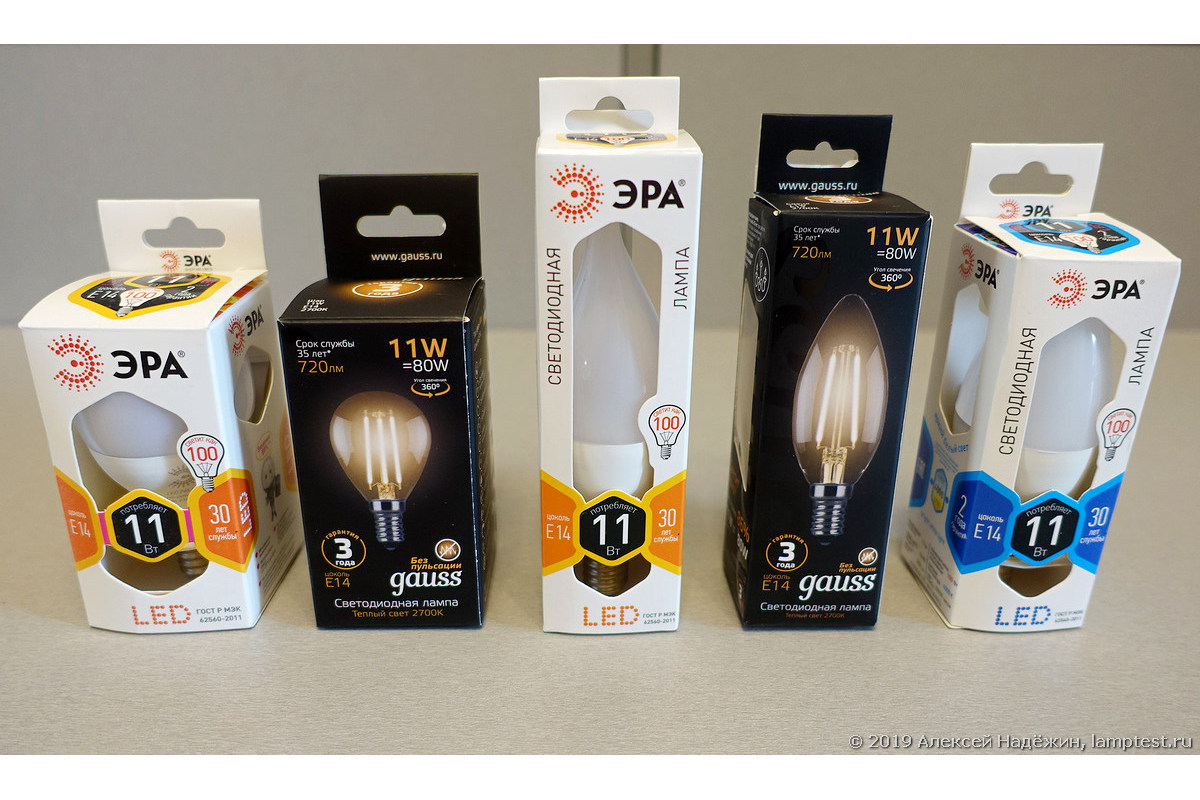
I specifically bought high power bulbs and tested them. The results are impressive!

Here's a filament candle and a Gauss ball, on which 11 W is written. Do you know what their power really is?
')

4.7 W! This is 2.3 times less than promised!

The boxes of these bulbs indicate that they give 720 lm and replace the 80-watt incandescent bulbs. In fact, they give 590 lm (here they lied only by 20%) and replace 60-watt lamps.
Another lie with the color rendition index: CRI> 90 is indicated, in fact only 81.
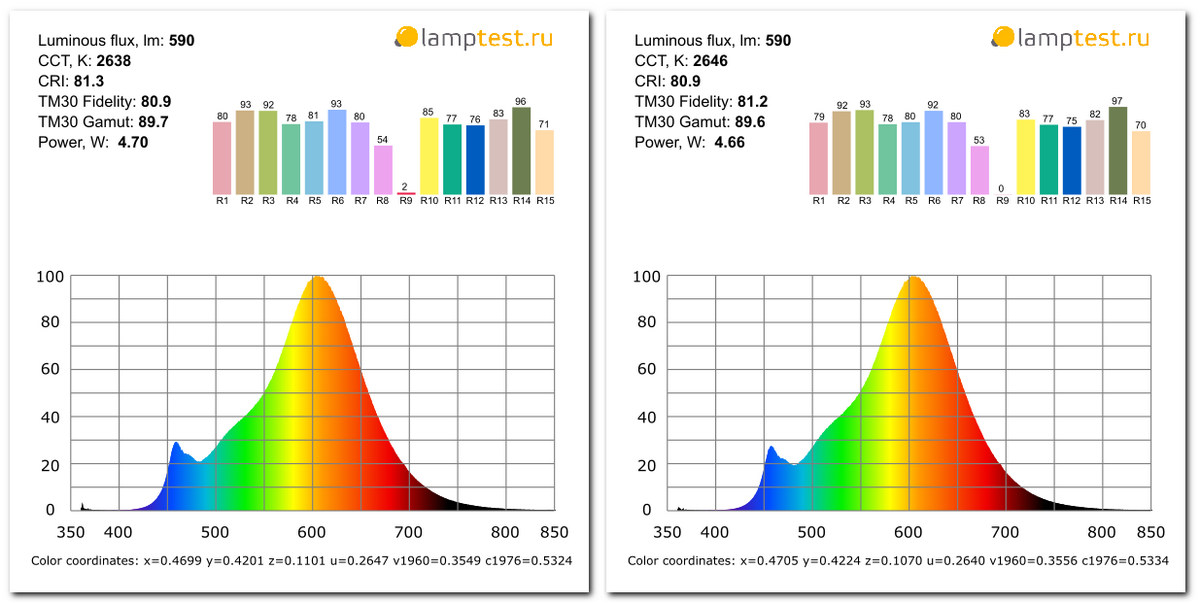
But the candle and ball Era. On the box - 11 watts, 880 lm, replacing 100 watts.
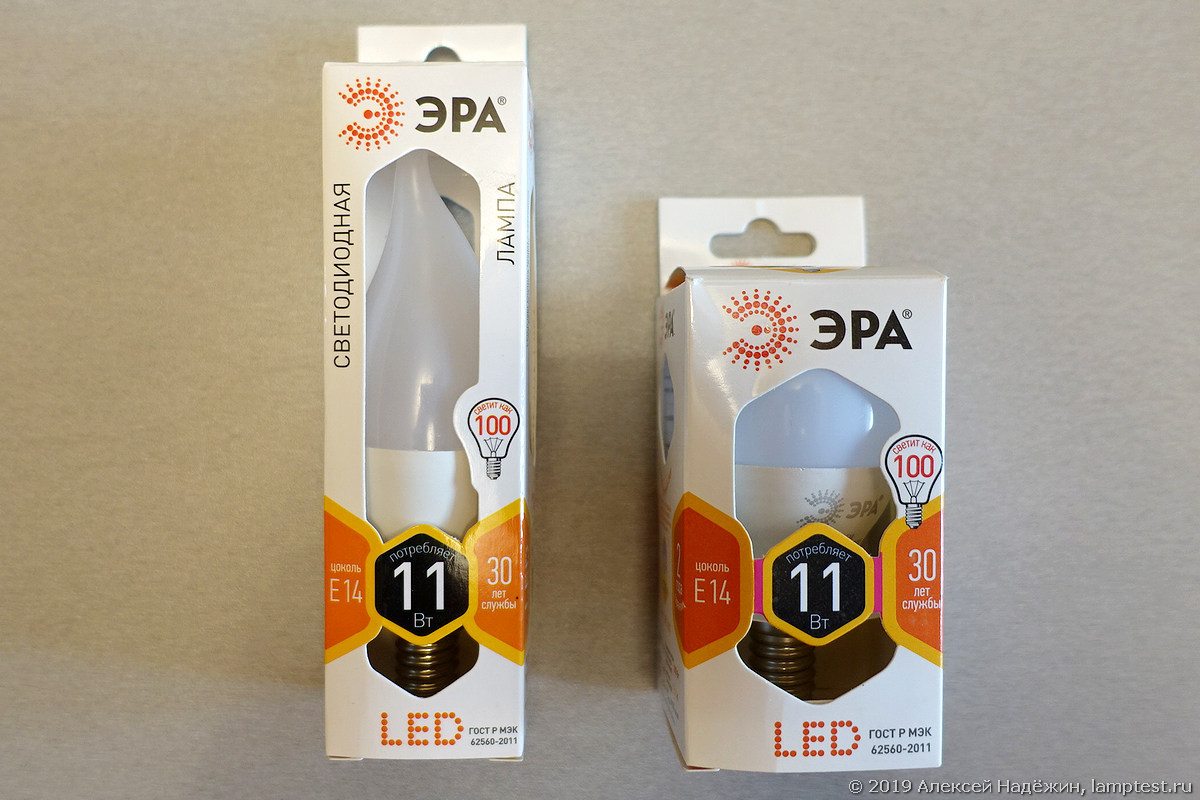
In fact, 7.5 W, 580/642 lm and the equivalent of 60 watts. Here with the power and luminous flux lied by a third, and with the equivalent by 40%.
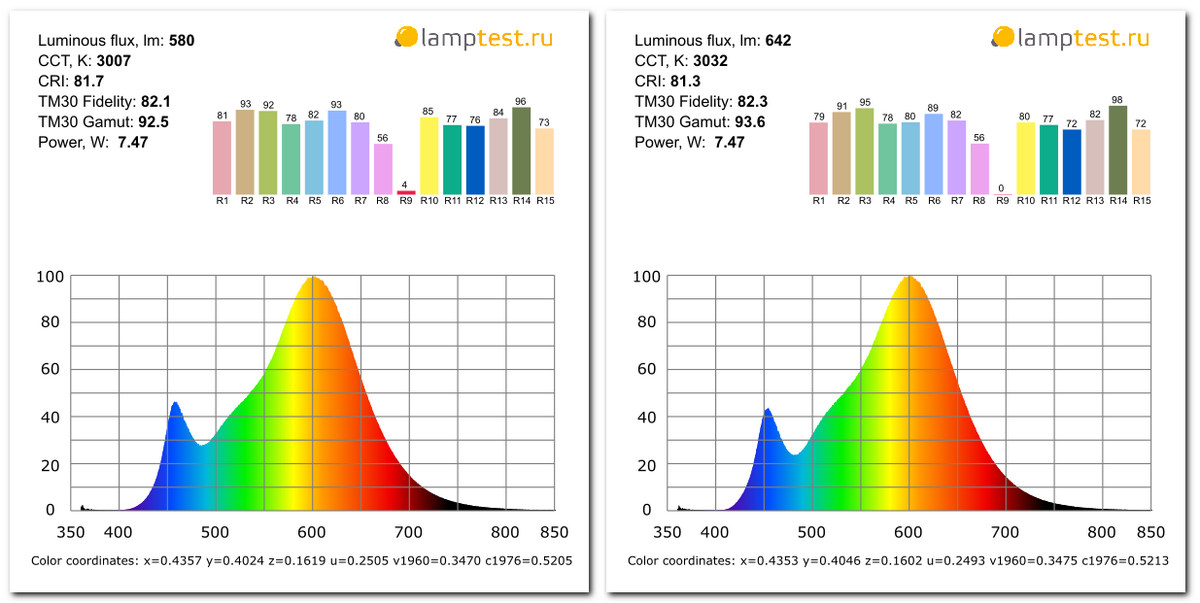
I have already tested 2500 models of LED lamps and today, February 25, 2019, the following maximum powers and light fluxes of different types of lamps have been fixed (no longer possible for technical reasons). Remember these numbers!
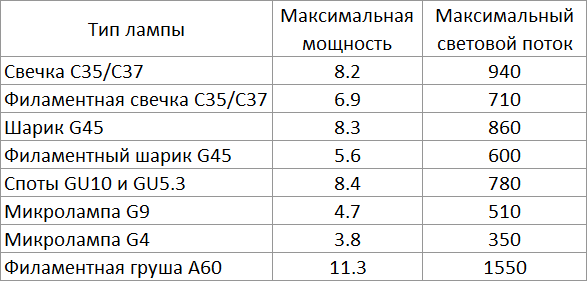
If you see a lamp in the store that shows more power or luminous flux than in this table, you should know that they are deceiving you.
Why is this happening? It all started a few years ago, when one of the manufacturers decided that if you write a little more power on the LED lamp box than it actually is, it will be better to buy it, because the buyer, having seen two lamps from different manufacturers in the display case, will choose the same price the one that is brighter, and he will choose according to power. The race of lies has begun! The second manufacturer decided that he, too, was not a fool, and increased the power even more, and then the third one more. And so, as a result, we have what we have: 11 W are written, and in fact 4.7 W. Even Russian Lisma joined this race, who always claimed that she strictly observes all laws and standards: for filament bulbs sold in Auchan, they had to write “5 W” on four-bulb lamps (otherwise nobody would buy such “dim” lamps). ).
Here is what a representative of one very famous brand wrote to me about this:
“Consumers in the general mass are still guided by a more understandable“ Power ”indicator when choosing lamps, so we have to overestimate the power parameters a bit in order to differentiate on the shelf.
On the one hand, this is slyness, on the other hand, it should be understood that people consume lumens, and pay for power. Therefore, the actual financial expenses are in fact lower than those stated on the package. ”
In this very situation, the General brand has acted in the most original way. The word "Model" is written on the boxes of their lamps in front of numbers and watts. It turns out that this is not the power, but the name of the lamp.

At the same time, the real (by the way, also slightly overestimated) power is written only in the instructions or in small print in the list of parameters on the box. By the way, the actual power of this lamp is 4.7 watts.
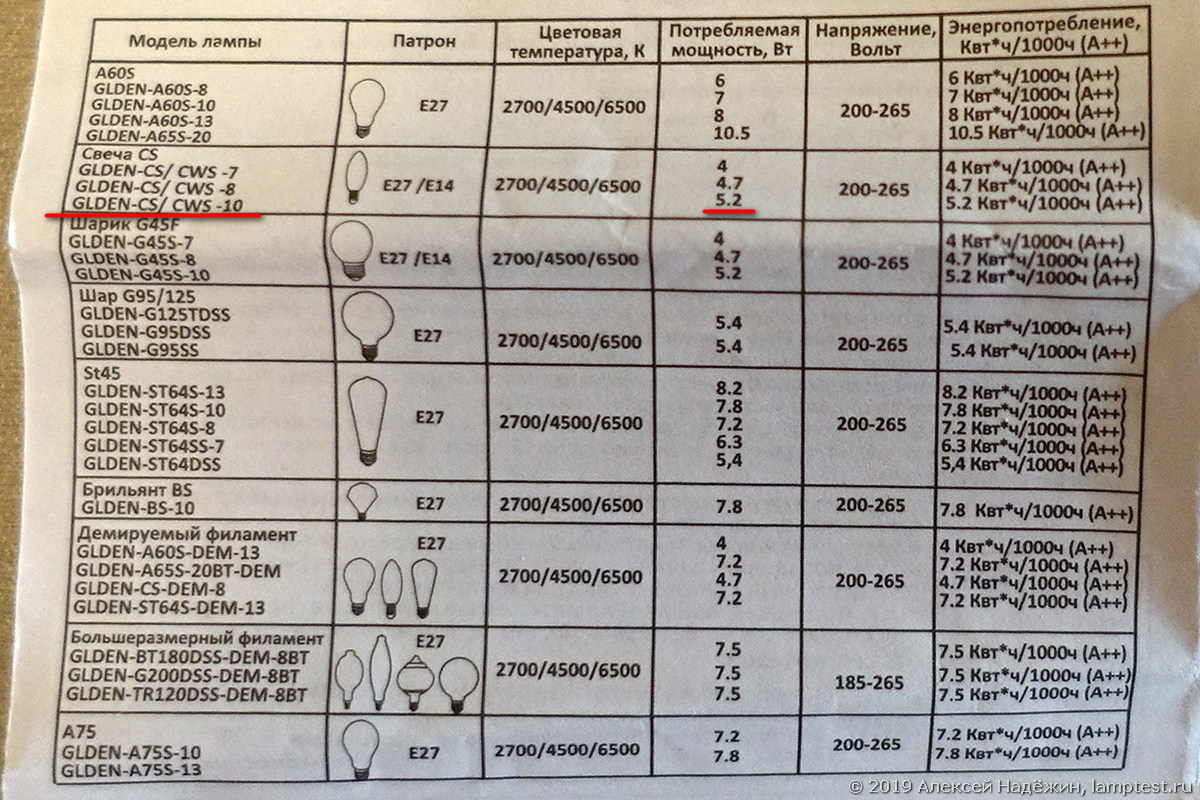
And one more rather unexpected thing. Here are the Era balls, on which 11 W and 9 W are written. Even knowing that the real power is less, anyone will say that the first lamp is still brighter, but this is not always the case.
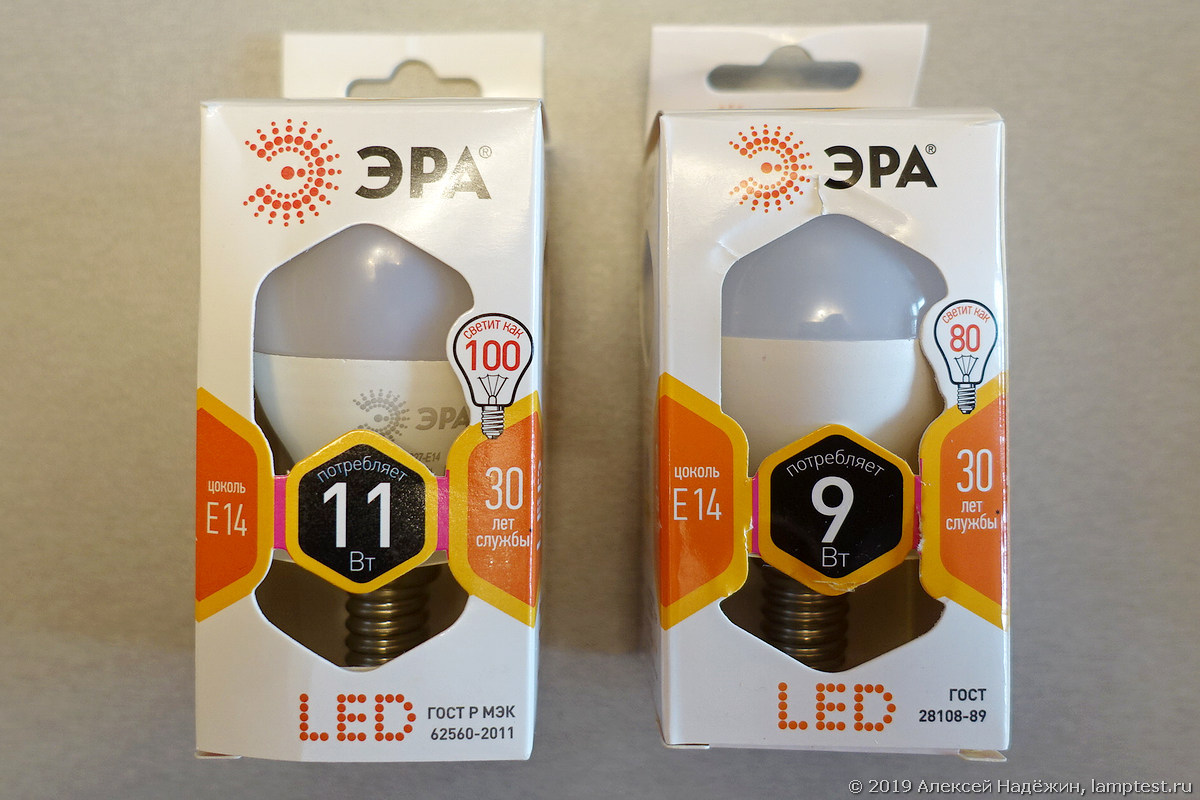
In this case, the power of the lamps was 7.5 and 7.1 W, and the luminous flux was 642 and 670 lm. As it is not surprising, the “supposedly 9-watt” lamp turned out to be slightly brighter than the “supposedly 11-watt”.
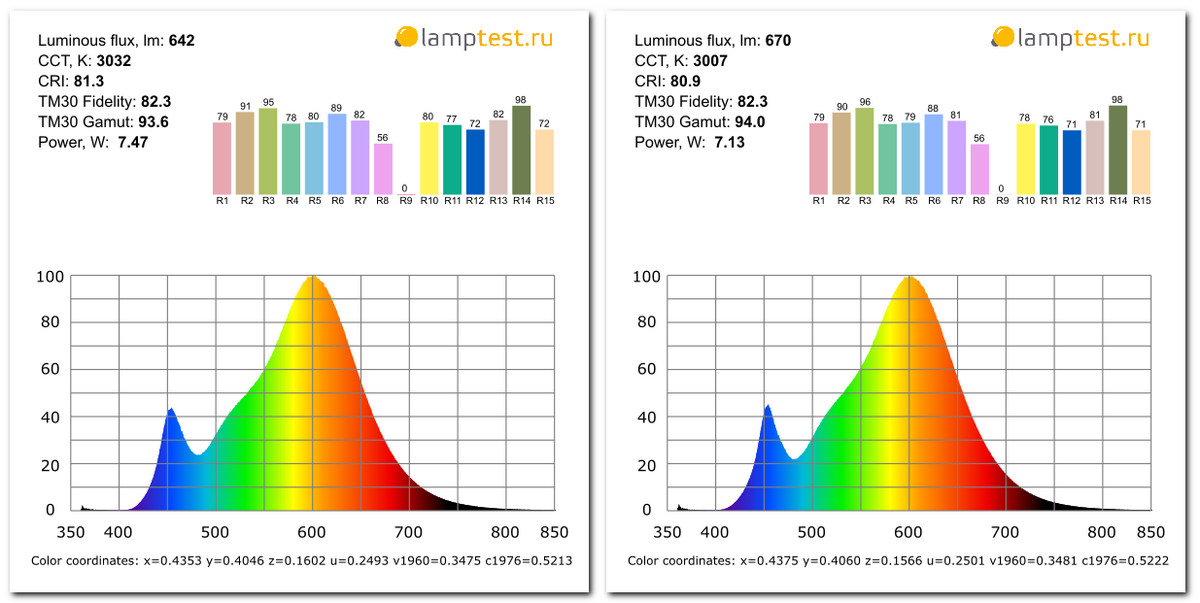
Sometimes manufacturers even write different power on the same lamps “in order to sell better”.
Often the difference between the lamps significantly different in power, indicated on the package, is quite small. So the power of the Gauss filament balls and candles, on which 9 W and 11 W are written, turned out to be almost the same - 4.66 / 4.74 W and 4.70 / 4.73 W. The luminous flux is different, but quite a bit: 547/590 lm and 519/590 lm. The reason is simple - there are no 9 and 11 W and the power of all the lamps is made as high as possible.
I note that there are manufacturers who almost do not lie with power and luminous flux. First of all, these are foreign brands - OSRAM, PHILIPS, IKEA, Diall, Lexman, Auchan, Polaroid. But there are Russian - X-Flash, Nanosvet, Goodeck, Robiton, Sky Lark, Videx, Voltega.
Unfortunately, no one controls the manufacturers of LED lamps. On the boxes, you can write anything, anything and no one for it will be nothing. According to Resolution of the Government of Russia No. 1356 “On Approving Requirements for Lighting Devices and Electric Lamps Used in AC Circuits for Lighting”, half of the lamps that are in stores should not be sold at all - because this resolution prohibits the use of lamps with a pulsation above 10% and the color rendering index is less than 80, but, as you know, the laws are not always fulfilled.
PS In the maximum power table, I do not provide data for ordinary pear-lamps with an E27 base, since their power can be increased simply by increasing the size of the lamp, and there are even 50-watt lamps of gigantic sizes. There is one exception in the table - I came across one G9 lamp with a real power of 6 W and a luminous flux of 513 lm, but I decided not to take it into account, since it was very bad (100% ripple, low CRI, extremely low energy efficiency).
PPS I don’t give here the results of all the lamp tests I bought this time. They can be viewed at Lamptest.ru .
© 2019, Alexey Nadyozhin
Here are just candles and balls of such power today can not exist.

I specifically bought high power bulbs and tested them. The results are impressive!

Here's a filament candle and a Gauss ball, on which 11 W is written. Do you know what their power really is?
')

4.7 W! This is 2.3 times less than promised!

The boxes of these bulbs indicate that they give 720 lm and replace the 80-watt incandescent bulbs. In fact, they give 590 lm (here they lied only by 20%) and replace 60-watt lamps.
Another lie with the color rendition index: CRI> 90 is indicated, in fact only 81.

But the candle and ball Era. On the box - 11 watts, 880 lm, replacing 100 watts.

In fact, 7.5 W, 580/642 lm and the equivalent of 60 watts. Here with the power and luminous flux lied by a third, and with the equivalent by 40%.

I have already tested 2500 models of LED lamps and today, February 25, 2019, the following maximum powers and light fluxes of different types of lamps have been fixed (no longer possible for technical reasons). Remember these numbers!

If you see a lamp in the store that shows more power or luminous flux than in this table, you should know that they are deceiving you.
Why is this happening? It all started a few years ago, when one of the manufacturers decided that if you write a little more power on the LED lamp box than it actually is, it will be better to buy it, because the buyer, having seen two lamps from different manufacturers in the display case, will choose the same price the one that is brighter, and he will choose according to power. The race of lies has begun! The second manufacturer decided that he, too, was not a fool, and increased the power even more, and then the third one more. And so, as a result, we have what we have: 11 W are written, and in fact 4.7 W. Even Russian Lisma joined this race, who always claimed that she strictly observes all laws and standards: for filament bulbs sold in Auchan, they had to write “5 W” on four-bulb lamps (otherwise nobody would buy such “dim” lamps). ).
Here is what a representative of one very famous brand wrote to me about this:
“Consumers in the general mass are still guided by a more understandable“ Power ”indicator when choosing lamps, so we have to overestimate the power parameters a bit in order to differentiate on the shelf.
On the one hand, this is slyness, on the other hand, it should be understood that people consume lumens, and pay for power. Therefore, the actual financial expenses are in fact lower than those stated on the package. ”
In this very situation, the General brand has acted in the most original way. The word "Model" is written on the boxes of their lamps in front of numbers and watts. It turns out that this is not the power, but the name of the lamp.

At the same time, the real (by the way, also slightly overestimated) power is written only in the instructions or in small print in the list of parameters on the box. By the way, the actual power of this lamp is 4.7 watts.

And one more rather unexpected thing. Here are the Era balls, on which 11 W and 9 W are written. Even knowing that the real power is less, anyone will say that the first lamp is still brighter, but this is not always the case.

In this case, the power of the lamps was 7.5 and 7.1 W, and the luminous flux was 642 and 670 lm. As it is not surprising, the “supposedly 9-watt” lamp turned out to be slightly brighter than the “supposedly 11-watt”.

Sometimes manufacturers even write different power on the same lamps “in order to sell better”.
Often the difference between the lamps significantly different in power, indicated on the package, is quite small. So the power of the Gauss filament balls and candles, on which 9 W and 11 W are written, turned out to be almost the same - 4.66 / 4.74 W and 4.70 / 4.73 W. The luminous flux is different, but quite a bit: 547/590 lm and 519/590 lm. The reason is simple - there are no 9 and 11 W and the power of all the lamps is made as high as possible.
I note that there are manufacturers who almost do not lie with power and luminous flux. First of all, these are foreign brands - OSRAM, PHILIPS, IKEA, Diall, Lexman, Auchan, Polaroid. But there are Russian - X-Flash, Nanosvet, Goodeck, Robiton, Sky Lark, Videx, Voltega.
Unfortunately, no one controls the manufacturers of LED lamps. On the boxes, you can write anything, anything and no one for it will be nothing. According to Resolution of the Government of Russia No. 1356 “On Approving Requirements for Lighting Devices and Electric Lamps Used in AC Circuits for Lighting”, half of the lamps that are in stores should not be sold at all - because this resolution prohibits the use of lamps with a pulsation above 10% and the color rendering index is less than 80, but, as you know, the laws are not always fulfilled.
PS In the maximum power table, I do not provide data for ordinary pear-lamps with an E27 base, since their power can be increased simply by increasing the size of the lamp, and there are even 50-watt lamps of gigantic sizes. There is one exception in the table - I came across one G9 lamp with a real power of 6 W and a luminous flux of 513 lm, but I decided not to take it into account, since it was very bad (100% ripple, low CRI, extremely low energy efficiency).
PPS I don’t give here the results of all the lamp tests I bought this time. They can be viewed at Lamptest.ru .
© 2019, Alexey Nadyozhin
Source: https://habr.com/ru/post/441610/
All Articles